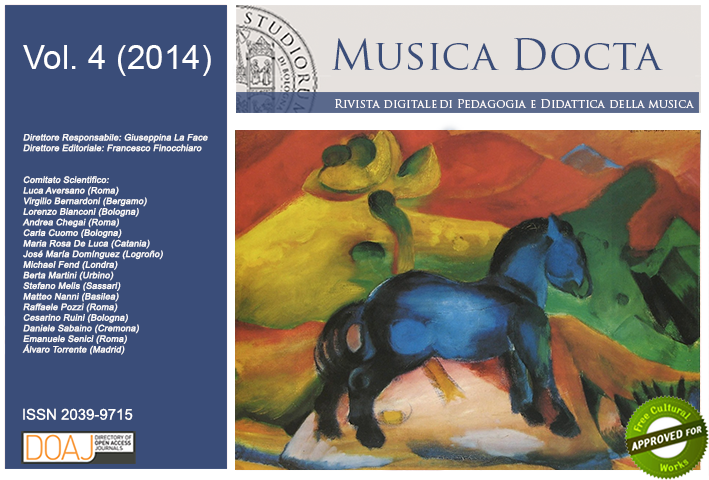Ascoltare (e far ascoltare) il melodramma: qualche istruzione per l’uso
DOI:
https://doi.org/10.6092/issn.2039-9715/4604Keywords:
opera, teaching, literature, arts, cinema, cultural studiesAbstract
In the present cultural situation it’s hard for students approaching to the world of lyric opera (on the contrary, modern technological opportunities might make it very easy).
First of all, it is important remembering them that opera is about theatre, a dramatic performance that employs music as its main way of communication: that’s why the librettos have to be considered very seriously. One must explain carefully the stories they tell, trying to fill the linguistic and cultural gaps not easily understandable today.
A way of smoothing the approach could be introducing previously those types of opera that mix spoken and sung performance: musical, opéra-comique, Singspiel, melodrama.
Very important results weaving the cultural and historical fabric of the times when an opera is born, and the sources of its libretto (dramas, novels, historiography): furthermore, stressing spots and links with contemporary external data.
However, it is not less important stressing the opposite direction: that means, how much literature, arts and ultimately movies owe to opera.
Finally, during an opera different chronological times are represented, expressed by different techniques and fixed in different musical structures. They all contribute to assemble the complex general architecture an opera consists of: analyzing and dissecting that machine is surely a good exercise for young students (even for more aged people).
Downloads
Published
How to Cite
Issue
Section
License
Copyright (c) 2014 Paolo Fabbri
The copyrights of all the texts on this journal belong to the respective authors without restrictions.
This journal is licensed under a Creative Commons Attribution Share-Alike 4.0 International License (full legal code).
See also our Open Access Policy.
Metadata
All the metadata of the published material is released in the public domain and may be used by anyone free of charge. This includes references.
Metadata — including references — may be re-used in any medium without prior permission for both not-for-profit and for-profit purposes. We kindly ask users to provide a link to the original metadata record.






